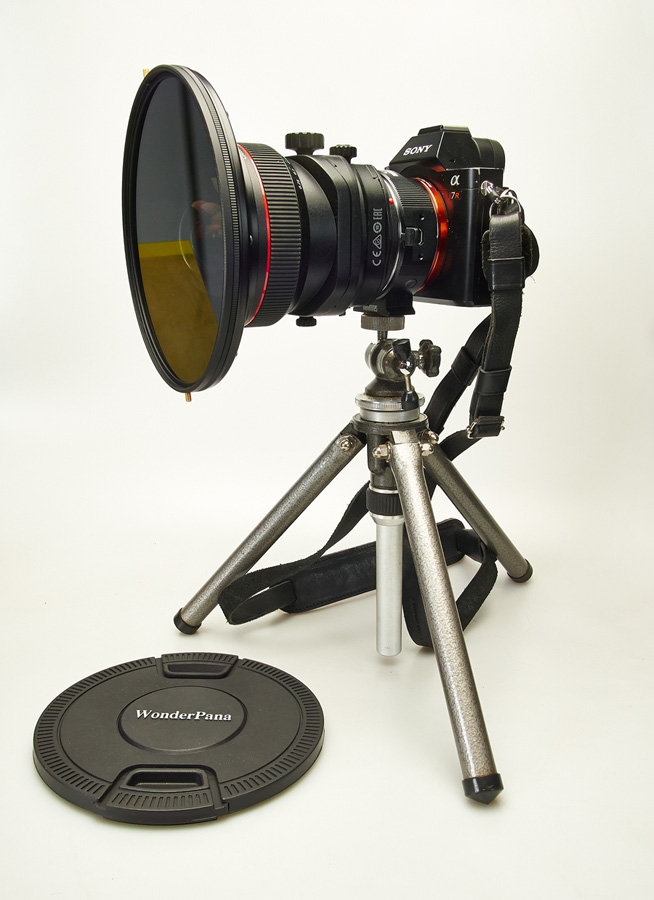If you like the color out of the backs and their bundled software it's hard to recreate the same look with different gear. Some find the "look" of medium format to be the key reason for using it. However the look argument is stronger when shooting short depth of field where the lens rendering becomes more apparent. In technical photography one often uses deep depth of fields ("whole image sharp") and then the lens rendering is much less apparent.Those are good points. I didn't think about them.
I originally started this thread with the idea in mind that I would need a med format back to mount on a technical or a view camera that would provide me with the types of movements that would expand the possibilities. As I started looking into what's available out there, I'm beginning to think that I'm not too sure about the need for a med format back or even a technical camera.
Are there any compelling reasons to shoot with a med format back provided you're fine with the 40-50mp resolution that modern 35mm digitals provide? What exactly does one gain with a med format back?
Despite that some still claim that the look, superior colors, more "depth" better "pop" or whatever is the key reason, even when looking at down-sized heavily post-processed web images. It's a valid reason for some but not all of us see it. To me medium format does not have any special magic like this, but it may have to you. By watching images and testing gear you can find out what you think yourself.
Another key reason is resolving power. Say you want the highest resolution you can get with the sharpest lenses, then a tech cam with a recent back and lenses is the answer. It's like if you shoot large format film yesterday and want a digital drop-in replacement, then a tech cam is the answer.
However, say that you come to the same conclusion like me, that you don't really need medium format for the "look", and resolution-wise the 135 high res cameras is enough for you, what are then the reasons?
If you like to work with tilt and shift and doing so with many different focal lengths you have more lenses to choose from in the tech cam ranges, and very high quality ones too. With the 135 systems you typically have only a limited choice of tilt shift lenses, and many of the lenses are limited in how you can combine tilt and shift. With a view camera you get tilt, swing, shift/rise/fall on all lenses as it's built into the body. (Note that some tech cameras are more limited than others when it comes to movements).
Another emotional reason that some of us responds to is the "zen factor", a tech cam is slow to work with, you can't shoot some suddenly appearing wildlife, and if you use a view camera type you can't really even hand-hold it. This narrows down your shooting to certain genres and to some of us this makes us more relaxed and focused on the type of photography we want to do. Others may instead get frustrated by the slowness and if you are one of those you should choose a different camera type. When I'm out photographing in nature my highest pace is about two photographs per hour. I could shoot much faster of course, but when you need to unpack and mount the camera for each shot you really only take out the camera if the shot is going to count. I like that.
I also like the "low tech" feel of those mechanical cameras, it's much like shooting film with the exception that you don't need to scan and dust-spot. That low tech feel is something that make some of us feel more connected to the scene than if using the latest Japanese electronic prosumer product. That too is very personal though and to some it doesn't matter.
There's also a "classic car" factor to it, it can be nice to use something different with a high tactile feel. These are very fine all-metal mechanical instruments and it's a joy to play with the gears compared to the fiddly 135 gear (especially when it comes to tilt-shift mechanics).
Previously a reason to use medium format was that you didn't feel the urge to upgrade that often, and indeed there are people that still use their 10+ year old backs, and that's rarely the case with135. I don't think this is a valid argument any longer though as medium format seems to be almost as quickly changing as 135 these days and those in the forefront upgrade often.
Oh, if you like to use legacy cameras for the look or fun an advantage with a digital back is that you can mount it on many different cameras.
I've been heard complaining a bit in this thread and that's because I feel the "zen" part of tech cams is slowly disappearing. It's becoming more electronic and more software-focused. There's still many choices around though with varying degrees of zen

